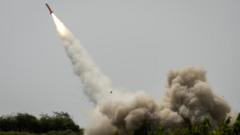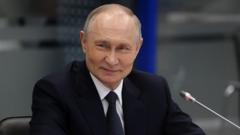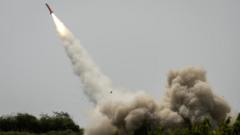Stalin's image has returned to Moscow's subway with a new statue that has attracted admiration and disdain, highlighting the Kremlin's ongoing efforts to reshape historical narratives amidst current geopolitical tensions.
Stalin's Statue Resurfaces in Moscow Subway Amidst Controversy

Stalin's Statue Resurfaces in Moscow Subway Amidst Controversy
A new statue of Joseph Stalin has been installed in a Moscow metro station, reigniting debates about his controversial legacy and its implications in modern Russia.
In a striking move that echoes the past, a statue of Joseph Stalin has reemerged in a Moscow metro station, more than fifty years after the removal of its predecessor during the de-Stalinization efforts of the 1960s. The recently unveiled statue portrays Stalin in a contemplative pose, surrounded by floral tributes from workers and children. This installation has rapidly turned into a focal point for both admiration and critical reflection among the city's commuters.
This revival of Stalin's image is part of a broader campaign by the Kremlin to reinterpret Russian history, emphasizing national pride and strength amid ongoing conflicts, particularly in Ukraine. For many, like Liliya A. Medvedeva, a pensioner and ardent supporter of Stalin's legacy, the statue signifies a return to an era of perceived national strength. Medvedeva expressed her joy over the statue's unveiling, attributing victory in World War II to Stalin's leadership while acknowledging some of his controversial decisions, suggesting that "everybody makes mistakes."
Despite such admiration, the public's response to the statue has not been unanimously positive. Many Russians harbor a deep mistrust of simplifying or glorifying Stalin’s complicated legacy, which includes grave human rights abuses and mass political repression. The mixed reactions raise concerns about the potential repercussions of revisiting historical narratives in a country where dissent is often met with hostility.
As the statue stands at the forefront of public discourse, it embodies the ongoing struggle within Russian society to reconcile a legacy that is as complex as it is contentious, inviting both nostalgia and criticism in equal measure.




















